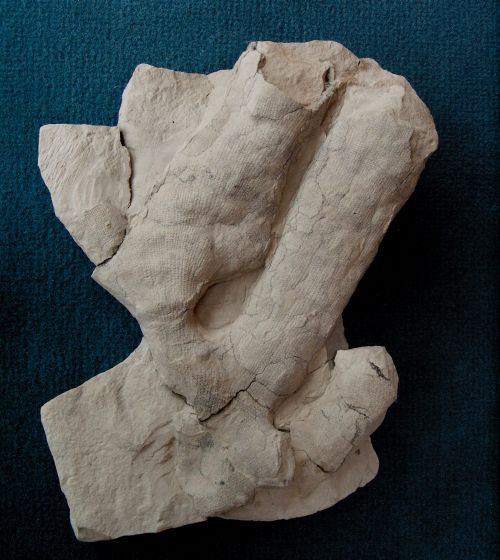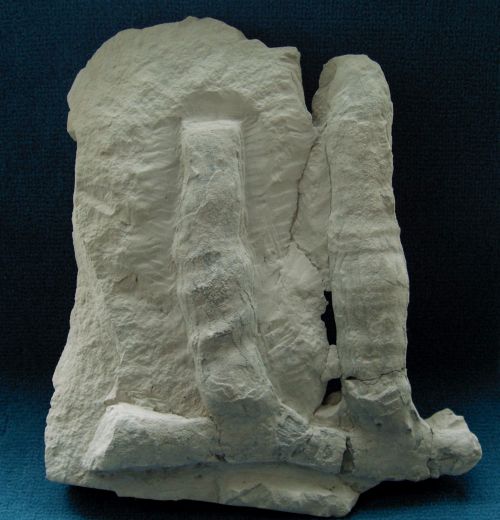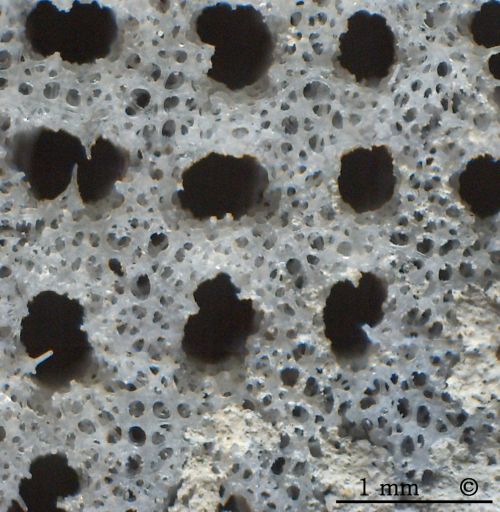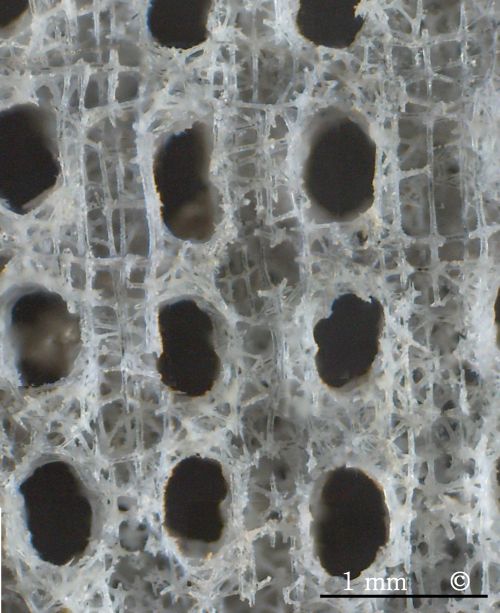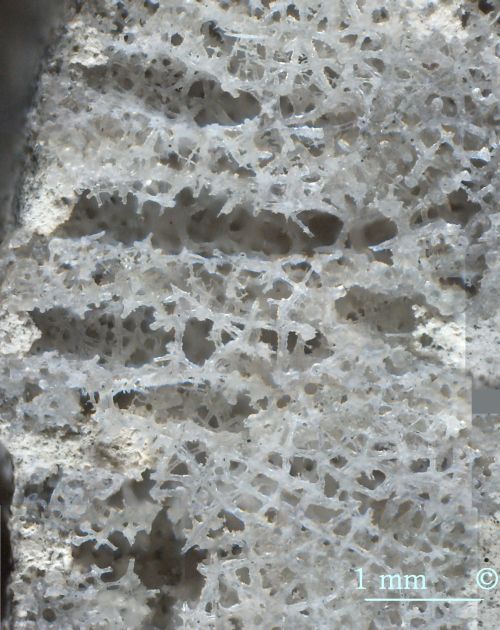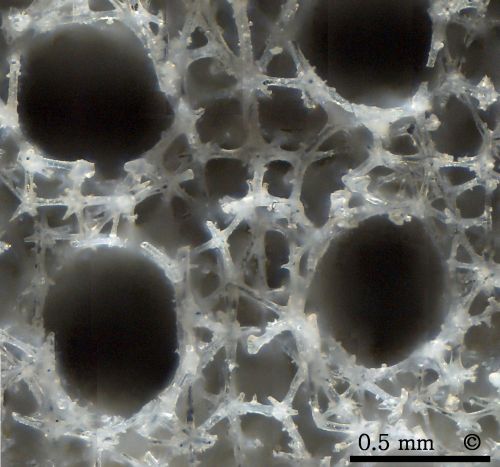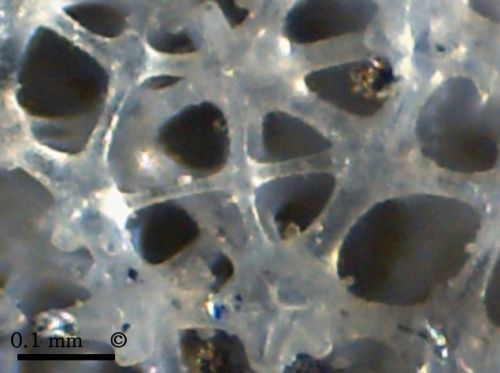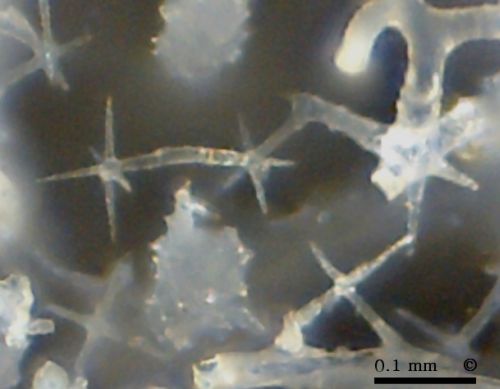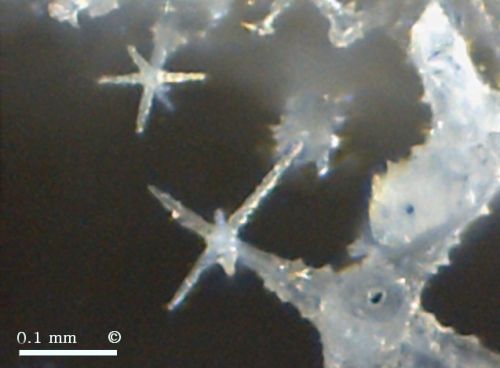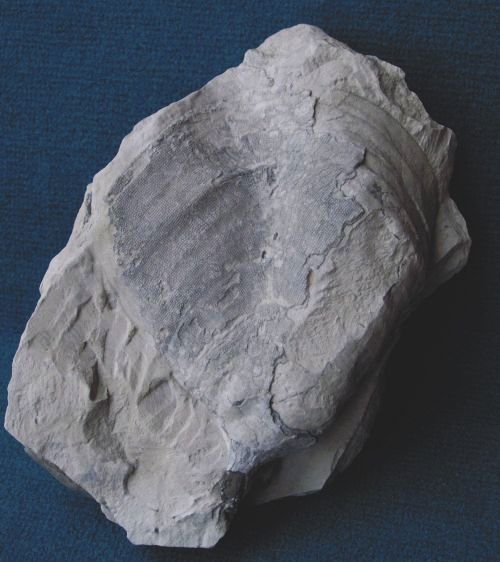
Laocoetis crassipes
Pomel 1872
Laocoetis crassipes has not been reported by Schrammen (1910-1912, 1924) for Misburg and Höver. However, Laocoetis crassipes is probably synonymous with Ocellaria cancellata of Roemer (1864), who described the species from the Cretaceous of North-Germany.
The specimen shown is a very thin-walled (1 mm), slightly folded funnel with a short stalk. The inhalent pores (epirhyses) on the dermal side are approx. 0.5 mm wide and are arranged in longitudinal and transvere rows, forming a rectangular pattern. The pattern of aporhyses on the gastral side is very similar, but the aporhyses are offset in such a manner that they occupy the positions between four adjacent epirhyses (arranged in quincunx).
